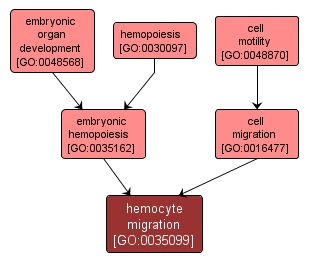| Desc: |
The directed movement of a hemocyte within the embryo. Hemocytes are blood cells associated with a hemocoel (the cavity containing most of the major organs of the arthropod body) which are involved in defense and clotting of hemolymph, but not involved in transport of oxygen. In Drosophila, embryonic hemocytes originate from the head mesoderm as a cluster of cells. The cluster splits into two and one group of cells crosses the amnioserosa. Both populations then spread toward the middle of the embryo and then disperse evenly throughout the embryo. |














